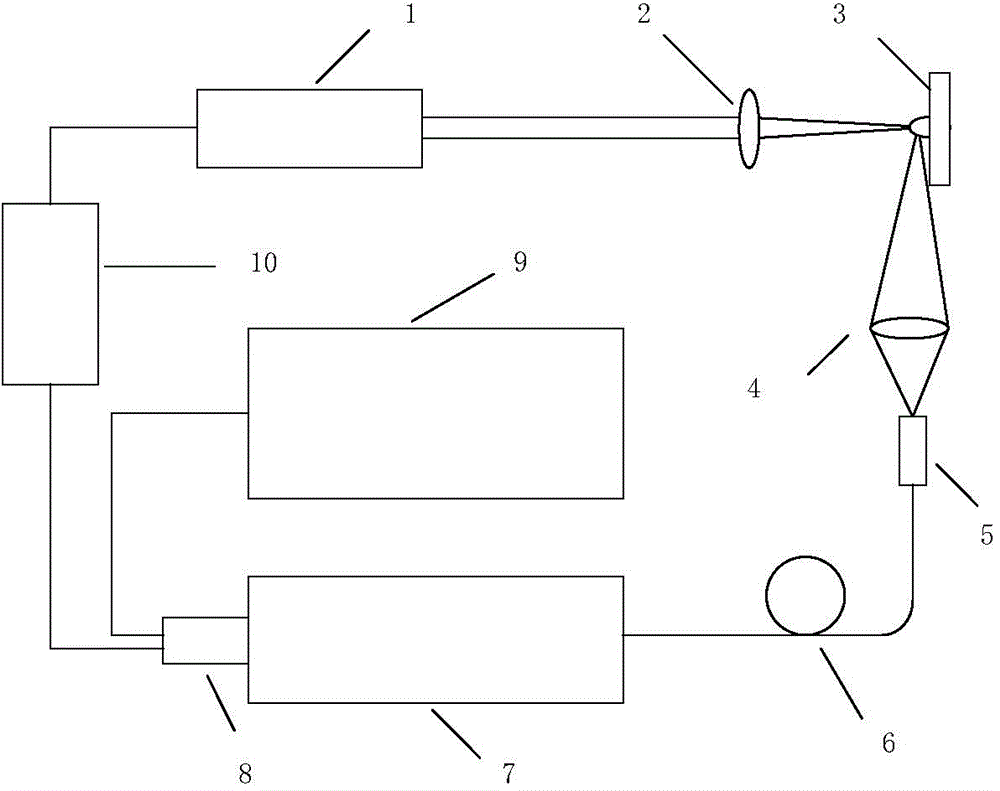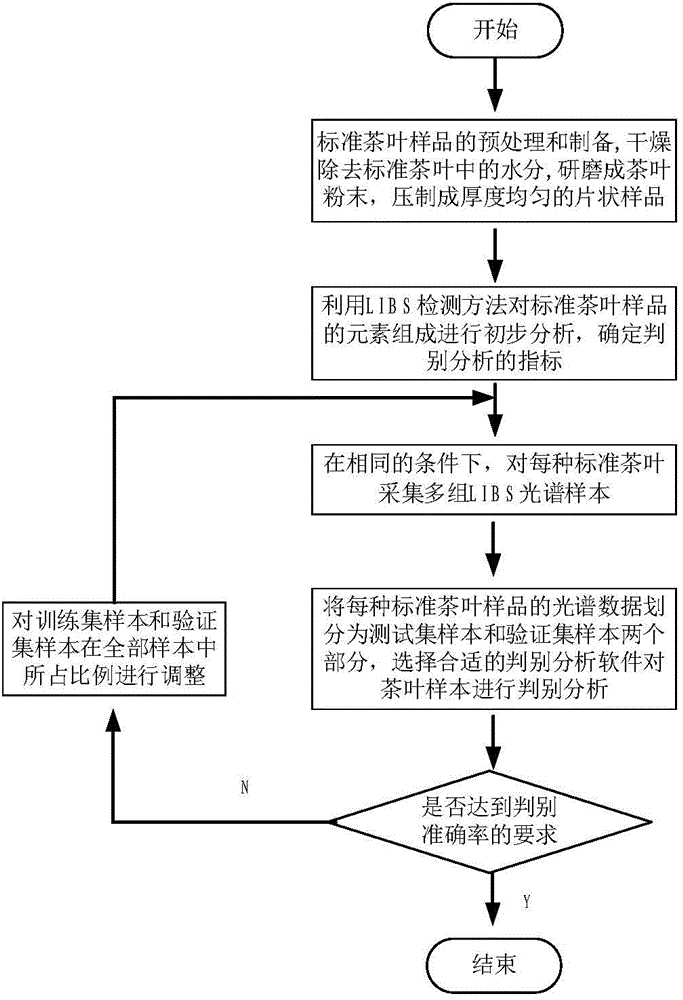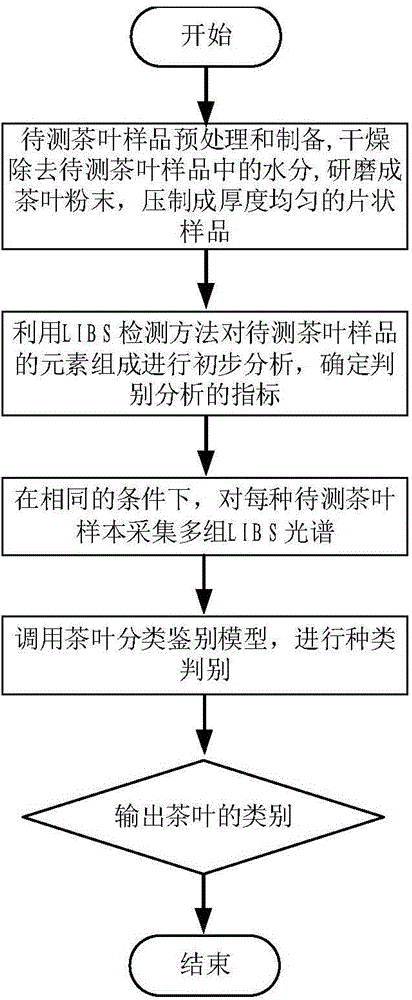Laser-induced breakdown spectroscopy-based tea classification and identification method
A laser-induced breakdown and spectroscopy technology, applied in molecular entity identification, material excitation analysis and other directions, can solve the problems of complex detection process, low efficiency and low accuracy of tea classification and detection, and achieve simplified detection process, rapid identification, The effect of improving efficiency
- Summary
- Abstract
- Description
- Claims
- Application Information
AI Technical Summary
Problems solved by technology
Method used
Image
Examples
Embodiment Construction
[0021] An embodiment of the present invention will be specifically described below with reference to the accompanying drawings.
[0022] The designers of the present invention performed the following experiments according to the present invention.
[0023] Select six tea samples of Longjing green tea, Mengding Huangya, white tea, Tieguanyin, Wuyi black tea and Pu'er tea, and use the method of the present invention to discriminate their types. In order to simplify the analysis process, they are numbered respectively and marked as 1, 2, 3, 4, 5 and 6 in turn. Considering that the physical properties of the sample, such as the dryness of the sample, the uniformity and density of the grinding will affect the spectral signal to a certain extent, the sample is simply pretreated before the LIBS detection experiment. First, the above six tea samples were dried using an electric blast drying oven at a temperature of 80°C for about 5 hours. All tea leaves were then ground using an aga...
PUM
 Login to View More
Login to View More Abstract
Description
Claims
Application Information
 Login to View More
Login to View More - R&D
- Intellectual Property
- Life Sciences
- Materials
- Tech Scout
- Unparalleled Data Quality
- Higher Quality Content
- 60% Fewer Hallucinations
Browse by: Latest US Patents, China's latest patents, Technical Efficacy Thesaurus, Application Domain, Technology Topic, Popular Technical Reports.
© 2025 PatSnap. All rights reserved.Legal|Privacy policy|Modern Slavery Act Transparency Statement|Sitemap|About US| Contact US: help@patsnap.com



